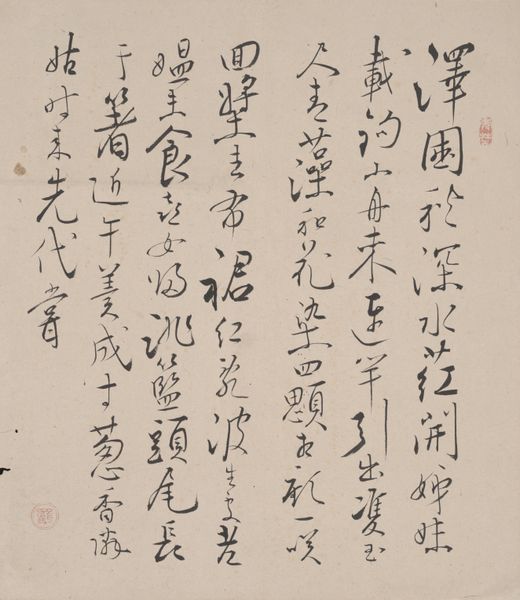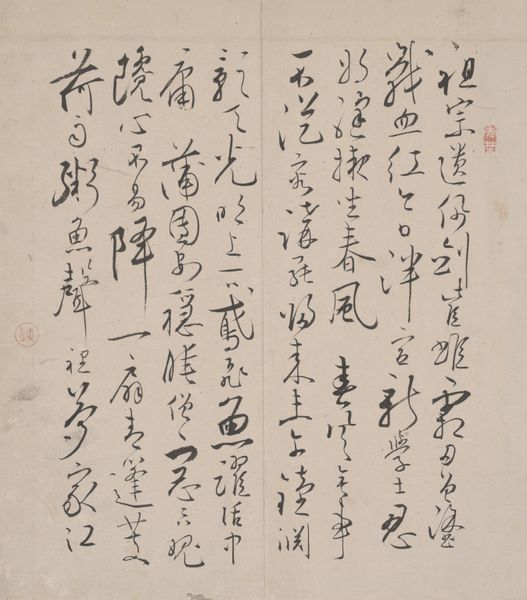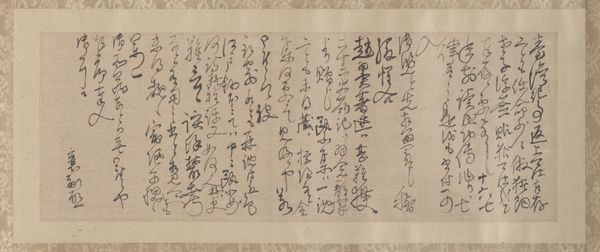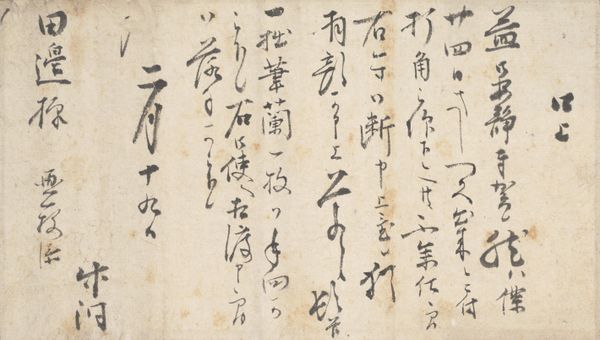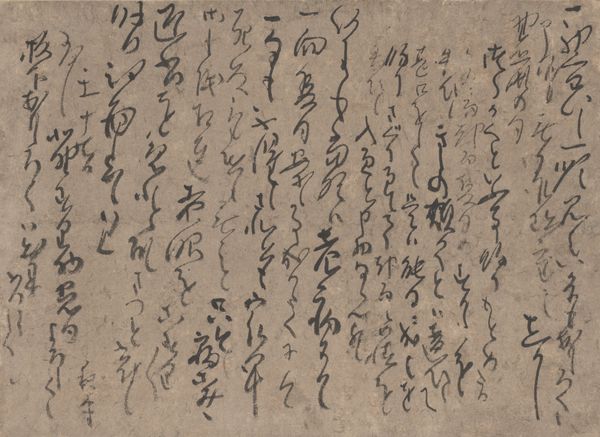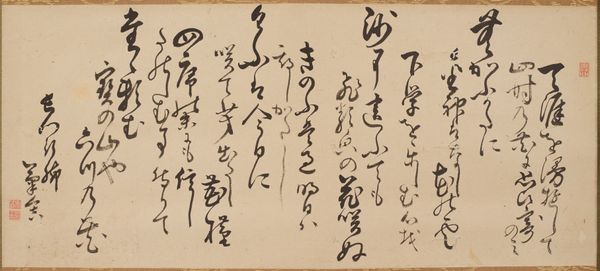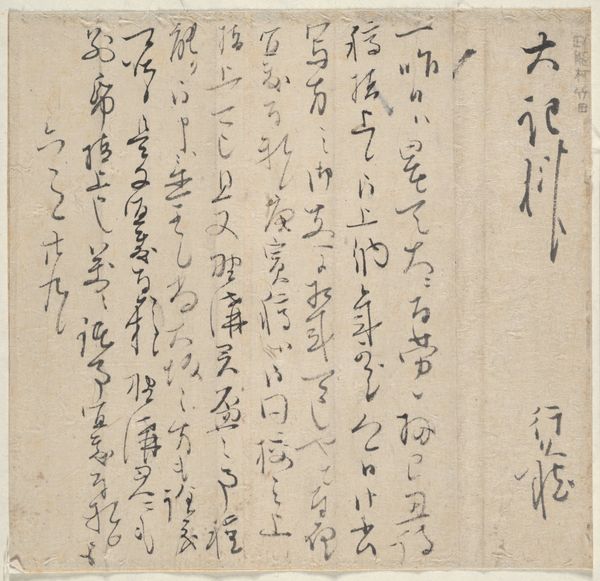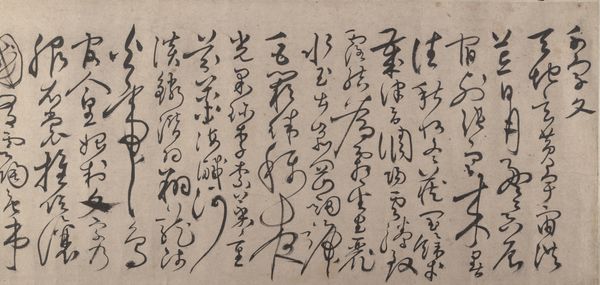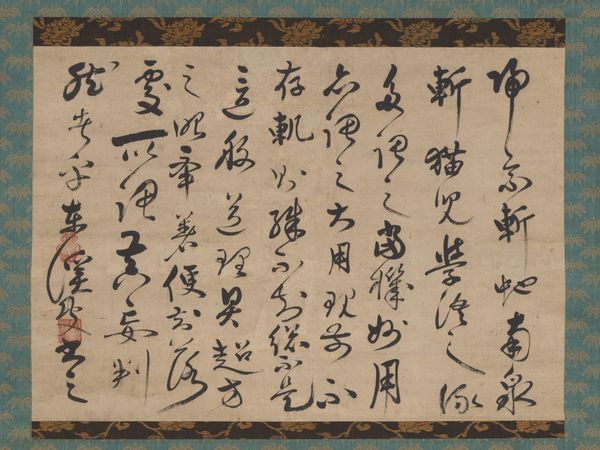
drawing, paper, ink
#
drawing
#
asian-art
#
paper
#
ink
#
calligraphy
Dimensions: 6 5/8 × 11 7/8 in. (16.83 × 30.16 cm) (image)46 × 17 1/2 in. (116.84 × 44.45 cm) (mount, without roller)
Copyright: Public Domain
Curator: At first glance, there's an almost restless energy here, even a bit defiant, with the bold, varied brushstrokes creating such strong movement. Editor: Indeed. We're looking at "Letter to Takami Sōkyū" by Ogyū Sorai, likely from the early 18th century. It’s an ink drawing on paper, a form of personal expression deeply embedded in social and political hierarchies of its time. Curator: The pressure and speed, I sense a real urgency here. But who were these figures and why this need to communicate with such force? Is it a genuine letter? Editor: Ogyū Sorai was a prominent Confucian scholar and advisor to the Tokugawa shogunate, a powerful government. His philosophical approaches greatly influenced the shift towards more pragmatic governance. Takami Sōkyū, the addressee, was likely another scholar or intellectual figure within Sorai’s network. We have to read such pieces through their network and system of thought. Curator: The very act of calligraphy, then, became a stage for power, intellect and artistic performance. Who controlled language controlled narrative. And the ink itself becomes a potent marker of class and access. The negative space isn’t passive; it actively defines and even challenges these strokes, wouldn't you say? Editor: Precisely. The aesthetic is clearly linked to the social role of the artist as an intellectual and member of a literati circle. Consider, too, the context of its preservation. A piece like this finds its way into the Minneapolis Institute of Art, shaping our own 21st-century reception. It begs questions about the dynamics of cultural exchange and how we imbue it with meaning now. Curator: It also touches on larger dialogues around art as a mode of social discourse. What stories can a single letter communicate about identity, influence, and historical processes? It reveals as much through what’s overtly written as through the implied spaces in-between, and what we as modern eyes are conditioned to fill in based on our backgrounds. Editor: Looking at this calligraphy broadens our understanding of this particular history and its relation with power. It helps to dismantle assumptions about aesthetic traditions as a passive product.
Comments
No comments
Be the first to comment and join the conversation on the ultimate creative platform.
